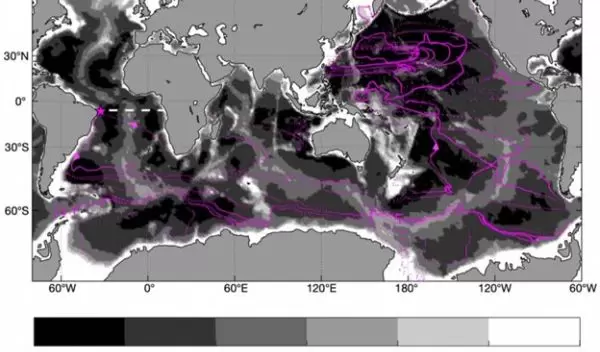
The 'grand tour' Atlantic Ocean water takes around the world
Scientists at Scripps Institution of Oceanography at the University of California San Diego and colleagues have created an estimate of the journey water makes around the world ocean basins. They used information from more than 1 billion points of data collected over 25 years.
The oceanographers found that random parcels of water will take hundreds or sometimes thousands of years to complete an epic journey back to their points of origin. They also find that a fundamental component of the circulation in the Atlantic Ocean could be more vulnerable to disruption than previously understood.
Scripps Oceanography researchers Louise Rousselet and Paola Cessi, with Gael Forget at the Massachusetts Institute of Technology, report their results in Science Advances. The U.S. National Science Foundation funded the research, along with NASA.
Rousselet and Cessi said the research is the first to follow trajectories of water supported by such a large amount of real-world data while using a computer simulation known as Estimating the Circulation and Climate of the Ocean, or ECCO. ECCO is an ocean model that incorporates more than 1 billion data collected from satellites, robotic free-drifting floats in the global Argo network, and other sources.
The model merges these data into a global simulation of the oceans much like weather forecasts do for the atmosphere. Water parcels on their journey through the ocean record physical properties, such as temperature and salinity. Following moving tagged parcels is a complement to describing ocean properties at fixed locations, such as the temperature at the end of the Scripps Pier.
The researchers found that about one-third of the water parcels left the Atlantic, then took a trip around the Pacific, Indian, and Southern oceans and needed about 300 years to return home. About 20% made roughly the same journey but traveled to greater depths and made a detour into the Weddell Sea off Antarctica. Those parcels needed 700 years to get back to the Atlantic.
The largest number, nearly half, needed 2,800 years to get back, diving for roughly 1,000 years into the abyssal Pacific Ocean. Those, Cessi said, took the "grand tour" of the world's oceans, visiting nearly every basin at varying depths before returning.
"Thinking of the pathways water parcels take around the basins is a good way for us to conceptualize complex ocean circulation," said Mete Uz, a program director in NSF's Division of Ocean Sciences. "Doing this directly with drifting instruments would be prohibitively expensive, but computer models, which seek a solution consistent with all our measurements, provide an efficient way to do this kind of analysis."


